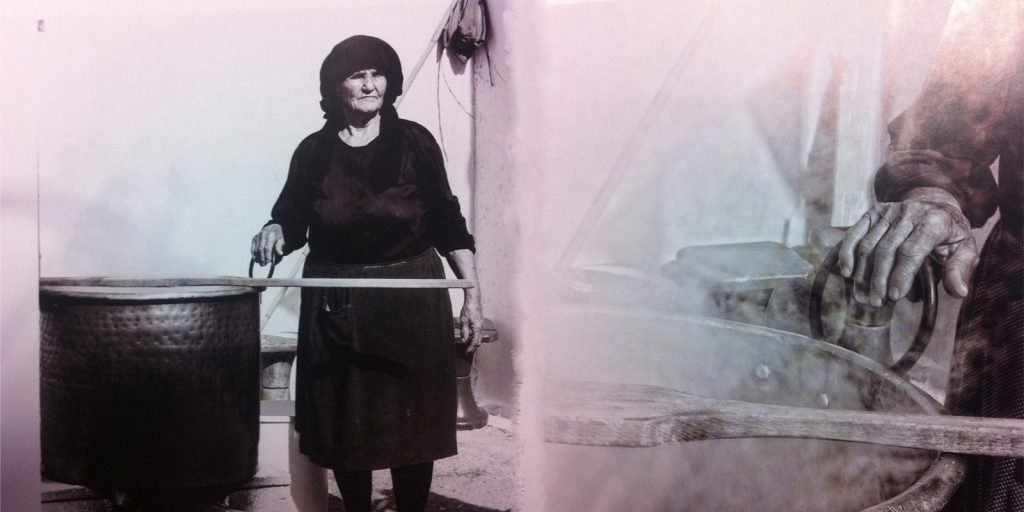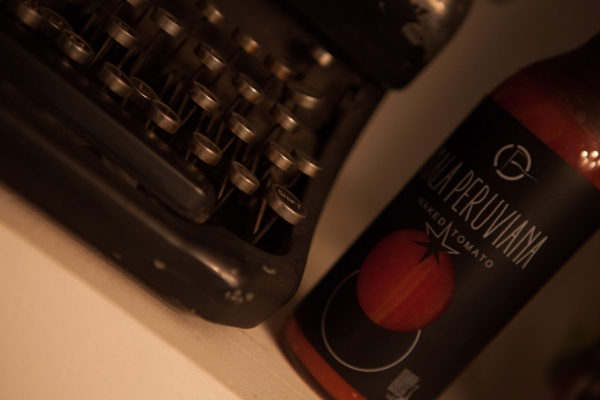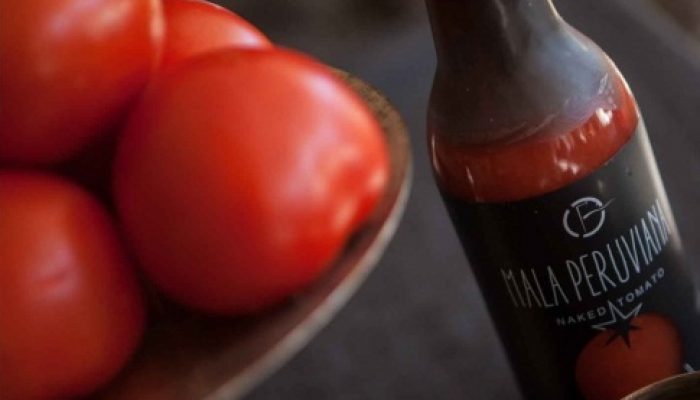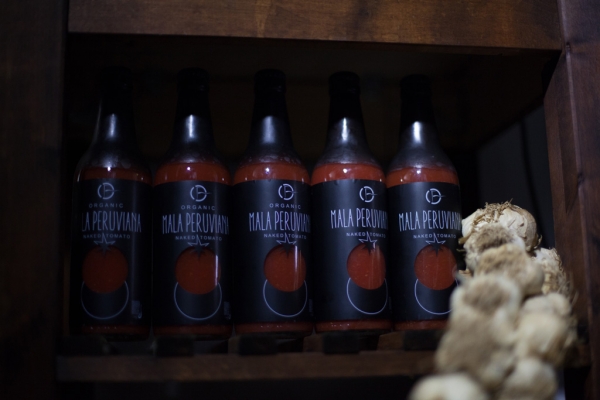It’s summer in the village & there is a distinct smell in the air. Passing by the “sauce maker’s” you realize that it’s time. The trucks outside are loaded with heaps of tomatoes. I know exactly what I will find upon entering the house…
… & that is exactly how it happens! The whole family is present, gathered for this year’s production. The crates of tomatoes meant to cover the family needs were not all sold to the factory. We will use them to make our own sauce, as we do every year. This way we will have this wonderful tomato juice until the next summer. This has always been the tradition. So the women begin grating the tomatoes by hand. Only a little bit of lemon juice & sea salt are added to the buckets in which the juice is collected. We as children, take on the role of the “fillers”. Our job is to fill the beer bottles that the “grownups” have emptied, with tomato juice. This comes from the times when recycling did not yet exist & so it was practised in different ways. The empty beer bottles were stored & before the production season began, they were washed & boiled so as to be refilled & used to store this red juice for the whole year. After filling them the grownups would then seal them & place them in a big pot to “boil”. Pasteurization as we know it today, done with the methods of the past!

Every year the same dialogue would take place. “Just imagine that our grandfathers called it the “Bad Peruvian*” when it first came to Greece”. “Well of course, they thought it was the devil amongst them. Something so new to them that even threatened their animals that ate the tomato stalks & then died! How could they know then about the atropine contained in the green parts of the tomato? The rest of the vegetable was safe to consume… so how could they explain that?!”
As I learnt while studying at university the tomato is a vegetable rich in lycopene, a natural antioxidant. & the best part is that light processing like the production of sauce makes this antioxidant more bioavailable! It is amazing how nature has thought of everything!

The years have gone by & many traditions were lost. The “sauce maker’s” shut down & we no longer gather to fill empty beer bottles in the summer. Nevertheless, there is a lovely such bottle in front of me right now… & its name is “Mala Peruviana” (The Bad Peruvian)! I break the wax seal & open it… I am instantly filled with memories in the form of smells. Intrigued I do my research. Two brothers decided to turn to tradition with a modern touch in times of a Greek crisis. They follow a traditional production method & have given their product a modern name that also comes from the past. I dig deeper & find out that the wonderful packaging is based on Aristotle’s theory of colours! A theory claiming that if black is combined with sunlight it gives off a fiery red colour! Thus the black label & black wax seal enclosing the fiery red tomato juice! The sunlight is in the tomatoes, absorbed generously under the Greek sun in the fields where they grew but it is also in the name of the company… “FOS Natural Creativity” (“FOS” is the Greek word for light).
So this is a wonderful tomato juice containing the traditions of the Greek land & culture. Use it while cooking or simply drink it for an unforgettable journey in taste!
To enjoy a Mala Peruviana click on the pic:
*When the tomato first made its appearance in Europe it was not met with great approval. They called it “Mala Peruviana” – The Bad Peruvian because its leaves were toxic & its fruit was shiny & red.








